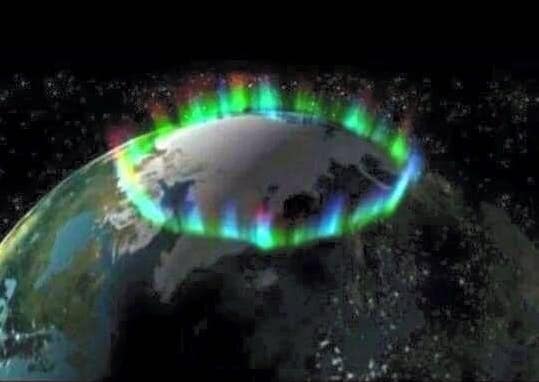
Keely
"The power of attractive vibration of the solar forces is the great coincident towards which the terrestrial magnetic sympathetic flow is diverted. This force is the celestial current that makes up the prime third of the triple association. It also induces aqueous disintegration and thermal concentration, the two prime conductors towards this coincident chord of sympathy with itself. Without this aqueous disintegration there would be no connective link between the celestial and terrestrial. There would exist nothing but a condition of luminous radiation on the order of the aurora - a reaching out for the concordant without any sympathetic diversion to create unstable equilibrium of terrestrial magnetism. In fact under such a condition, the absence of the sun on one side, or the absence of water on the other, the magnetic or electric force would remain in a stable state of equilibrium, or the highest order of the chaotic." [Vibratory Physics - The Connecting Link between Mind and Matter]
"So bright was the moonlight at the beginning of my walk... The whole sky was bathed with light, and the Barrier seemed to exhale a soft, internal luminescence of it's own. At first there was not a cloud anywhere, and the stars glittered with an unnatural brightness. Overhead, in the shape of a great ellipse, was a brilliant aurora. Waves of light pulsed rapidly through it. Beyond it, scintillating in the sky, was what appeared to be a drapery hanging over the South Pole. It hung in folds, like a gigantic curtain, and was composed of brilliant light rays. The snow was different shades of silver gray (not white as one would suppose) with the brightest gray making a pathway to the moon.
The wind blew gently from the pole, and the temperature was between 40° and 50° below. When Antarctica displays her beauty, she seems to give pause to the winds, which at such times are always still.
Overhead the aurora began to change it's shape and became a great, lustrous serpent moving slowly across the zenith. The folds in the curtain over the pole began to undulate, as if stirred by a celestial presence.
Star after star disappeared as the serpentine folds covered them. Suddenly the serpent disappeared. Where it had been only a moment before, the sky was once more clear; the stars showed as if they had never dimmed. I was left with the tingling feeling that I had witnessed a scene denied to all other men." [Excerpt from 'Alone', Admiral Richard E. Byrd]

An aurora (plural: auroras or aurorae) is a natural light display in the sky, particularly in the polar regions, caused by the collision of charged particles directed by the Earth's magnetic field. An aurora is usually observed at night and typically occurs in the ionosphere. It is also referred to as a polar aurora or, collectively, as polar lights. These phenomena are commonly visible between 60 and 72 degrees north and south latitudes, which place them in a ring just within the Arctic and Antarctic polar circles. Auroras do occur deeper inside the polar regions, but these are infrequent and often invisible to the naked eye.
In northern latitudes, the effect is known as the aurora borealis (or the northern lights), named after the Roman goddess of dawn, Aurora, and the Greek name for the north wind, Boreas, by Pierre Gassendi in 1621. Auroras seen near the magnetic pole may be high overhead, but from farther away, they illuminate the northern horizon as a greenish glow or sometimes a faint red, as if the Sun were rising from an unusual direction. The aurora borealis most often occurs near the equinoxes. The northern lights have had a number of names throughout history. The Cree call this phenomenon the "Dance of the Spirits". In Europe, in the Middle Ages, the auroras were commonly believed a sign from God. see [Wilfried Schröder, Das Phänomen des Polarlichts, Darmstadt 1984]
Its southern counterpart, the aurora australis (or the southern lights), has similar properties, and is visible from high southern latitudes in Antarctica, South America and Australia
Auroras can be spotted throughout the world and on other planets. They are most visible closer to the poles due to the longer periods of darkness and the magnetic field. (wikipedia)
See Also
Dispersion
Electricity
Light
Vibratory Physics - The Connecting Link between Mind and Matter
